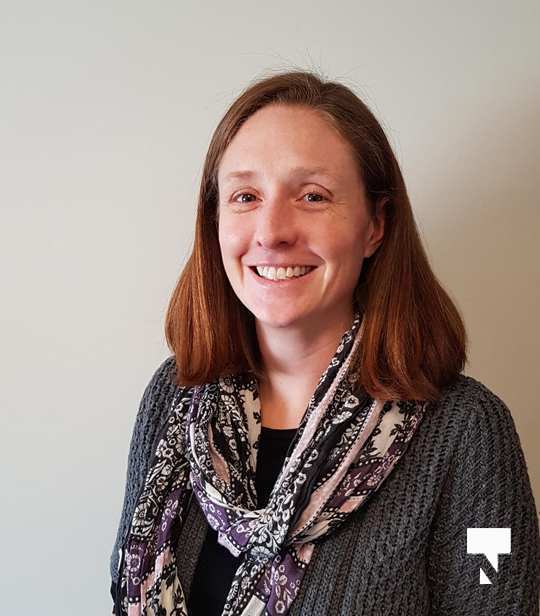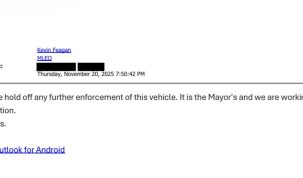By Cecilia Nasmith/today’s Northumberland
How closely we follow current public-health guidelines in observing the holidays determines how severely COVID-19 will affect us in January.
In her latest media-scrum update, Haliburton Kawartha Pine Ridge District Health Unit Medical Officer of Health Dr. Natalie Bocking said Wednesday that things are happening fast and results are being felt.
“There are a lot of moving pieces to COVID activity and COVID response right now,” Dr. Bocking said.
Of the 145 active cases in HKPR, 85 are in Northumberland County. The most recent positivity rate was 4.6%, and the seven-day average currently sits at 82.8 per 100,000 population.
These numbers will in all likelihood increase, given that – so far – 17 local lab tests have been positive for the Omicron variant. And in other areas where Omicron comes in, it becomes dominant.
And once this happens, case counts rise on a steeply vertical line. In Kingston, for example, the seven-day rate is more than 450 per 100,000.
Among local cases identified in the past 14 days, she said that 16% are in the 20-29 age range and 15% are in those aged 50 to 59. Looking at the source of transmission, 21% have no identifiable source, while 11% attribute it to household contacts and 13% to close contacts.
Reporting this level of detail may not be possible in the future, Dr. Bocking said.
“As we continue to see higher case volumes, that moves us beyond the capacity to do the same case management we have been doing. We won’t have some of the details we have previously had.
There are so many cases, we can’t reach all of them.”
Changes are being made, such as no longer identifying and notifying high-risk contacts. Henceforth, when a case is identified, the person will get a letter with information to give everyone he or she has had close contact with.
“That is consistent with many other health units,” Dr. Bocking said.
She foresees more local follow-up on certain cases, such as those under the age of 18 and those involving such high-risk settings as group homes and long-term-care homes. However, “the majority of new cases identified are being forwarded on to a provincial program that will follow up cases as well. This provincial work force was created part-way through the pandemic to support health units seeing case volumes beyond their capacity to respond to.”
The changes will be seen in the COVID dashboard feature of their website, she said. For example, they will no longer report on high-risk cases identified since they won’t have that information.
And of course, over the holiday period, they will not update figures every day (though they will certainly try to be sure updates occur at least every couple of days).
Dr. Bocking reviewed what she called the COVID-19 toolbox, which includes the individual behaviours and practices we all know by now (and must continue) – physical distancing, wearing a tight-fitting mask, hand hygiene, staying home if you feel at all unwell.
Outbreak-management measures include observing public-health restrictions and enforcing these regulations.
And vaccinations of course remain a major resource, especially against the Omicron variant.
“The booster dose does provide additional protection against symptomatic illness. With two doses, there’s maybe 35% protection. With a booster, it’s 70-75%. That’s still not 100%, but it underscores the on-going need for people to continue to follow those basic measures we have been doing for so many months now,” Dr. Bocking said.
Challenges to getting people vaccinated have arisen on two fronts.
One is the approval of the shot for those aged five to 11.
The other is the criteria for booster shots. The age has been lowered to 18 from 50. As well, the required gap between second shots and boosters has been halved to 84 days from 168.
It’s somewhat like the situation eight or nine months ago, when there was a high demand for vaccine. Only now, the shortage is not vaccine but the human resources required to create enough appointments to take care of this vast number of newly eligible seekers of inoculations.
While they have added 6,500 appointments to the provincial booking system for December, almost all of them have already been taken. Pharmacies are doing their best to address this shortfall, she said, as are those primary-care practices that have been offering the shot to their patients. But there’s not enough capacity to meet current demands.
The clinic at the Cobourg Community Centre has expanded to take up the full gym instead of just half. In partnership with the Northumberland Family Health Team and Northumberland Hills Hospital, they have been able to add evening hours over the last couple of weeks in December. In January, it will go to a seven-days-a-week schedule. And these January appointments have been posted to the provincial booking system.
“We continue to try to hire new staff to support further clinics but, as you know, this is an on-going process and we re-evaluate on a daily basis,” Dr. Bocking noted.
If plans proceed smoothly, she estimates there will be the potential to give 700 shots a day.
Dr. Bocking discussed other challenges that have been happening at the clinics, such as Pfizer supply. Moderna is encouraged for those over age 30 getting boosters, though Pfizer is favoured for those younger. As there is currently a shortage in Pfizer shipments to Ontario, they endeavour to reserve any of their Prizer supply for this younger age group.
The shortage of Rapid Antigen Tests and the limited capacity of centres that provide Polymerase Chain Reaction tests is a concern. Dr. Bocking urges those unable to get either to take any symptoms (even mild ones) seriously.
“Assume it’s COVID. Assume it’s Omicron, and isolate for 10 days,” she advised.
“COVID-19 continues to challenge all of us, to challenge the public-health system, our acute-care system and community to adapt in how we are living with COVID-19.”
Looking at how COVID-19 usually goes, Dr. Bocking said that steeply increased numbers are typically followed a couple of weeks later by more hospital admissions and more ICU admissions.
Depending on how long these hospital stays are, case count can stay high for as long as two months.
“By February, we are likely to see actual case numbers come down, but there will still be high pressure on our health-care system,” she figures.
“We know, because Omicron is so much more infectious and causes numbers to go up so rapidly, the question is – will they come back down that much more rapidly. There’s a lot we don’t know at this time.”
While many residents were willing to take the rapid test before attending a holiday party, shortages in the supply of these tests has sprung up. But Dr. Bocking said that these tests are only 60-65% effective at detecting the virus when it is present. In fact, the recommended procedure when a positive is indicated is to have the finding confirmed at a proper facility that offers PCR testing.
In the case of a positive rapid test where a PCR follow-up is not possible, Dr. Bocking advised, take it seriously and isolate for 10 days from that point.
“I think we need to go back to revisiting gatherings – full stop,” she stated.
“Ironically, we find ourselves again in a holiday season where we would typically be gathering with loved ones, friends, family at a time where we know that is not in the best interests of our community, given what we know about COVID and how it circulates.”
Her suggestion for holiday plans is small, smart and safe.
Scale down plans for gatherings, and be smart about how you carry them out. Make sure your masks are tight-fitting, observe current restrictions, consider opening the window every so often to improve ventilation.
“I think we need to be aware in the next couple of weeks we are going to see significant COVID-19 activity. Ultimately, what we are doing today by following public-health restrictions and getting vaccinated – we are not stopping Omicron and COVID, but we are slowing it down and helping reduce what the impact will be on our acute-care system, our emergency department and our hospitals in January, because that is when we will see the impact of this.”






















